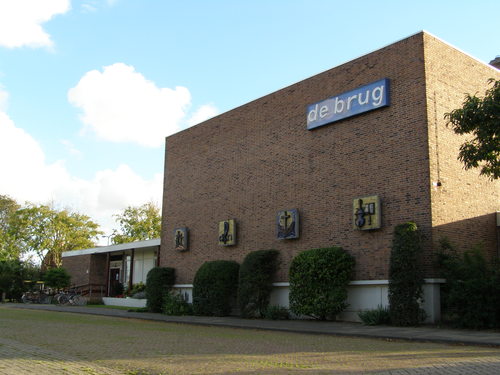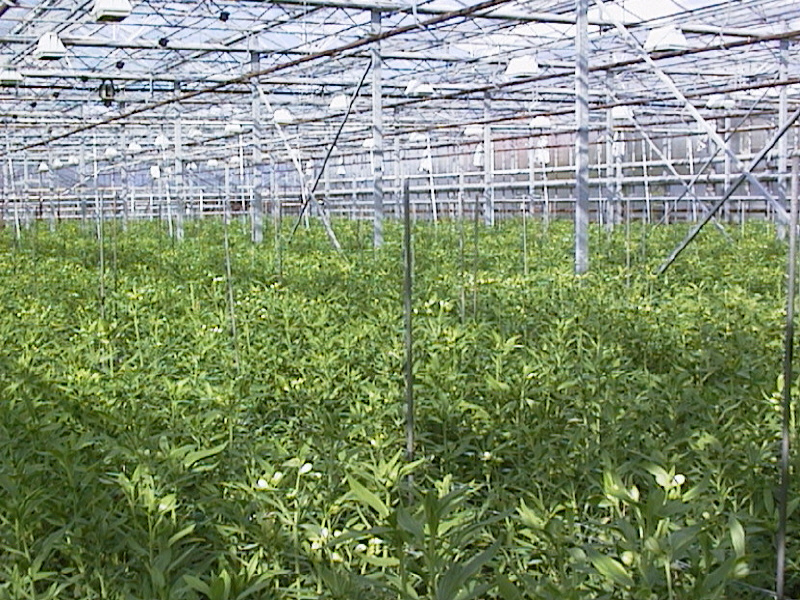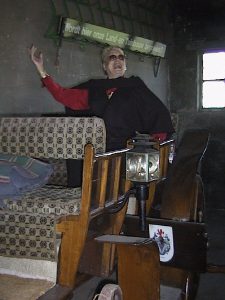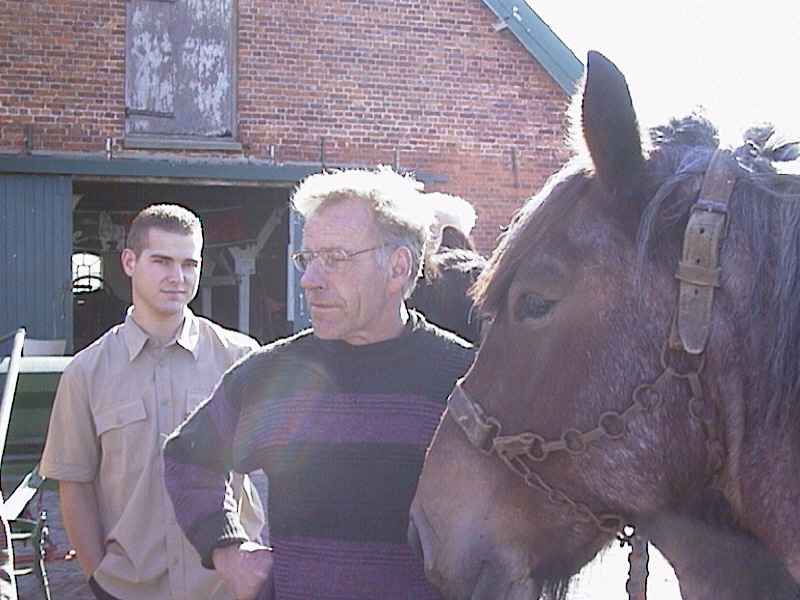 Historical grounds and well-known namesake businesses
Historical grounds and well-known namesake businesses
At around twelve o’clock, I left De Brug in ‘s-Gravenzande for the car journey. It was beautiful weather with clear skies, and the temperature was excellent for an outdoor activity. However, it was challenging to leave De Brug because various family members asked me questions, and I also had to help a couple in wheelchairs to the store before I could leave them in the care of others. With the directions in hand, I arrived at the first stop, where I read the following in the directions:

Frans and Jelle Vreugdenhil Brothers
At Poelkade no. 28 on the right side is the company of Frans and Jelle Vreugdenhil (branch D). They cultivate alstroemerias. You are invited to see how the cultivation works, and harvesting is also in full swing. This company has been around for over 70 years, and the fourth generation is already working in the business. The road to get there was very rustic: you drive through a typical Westland landscape without views because the greenhouses obstruct them. With pen and paper in hand, I asked Frans a few questions. The family has been cultivating alstroemerias for twenty years. Of course, the issue of pesticides was also discussed. The quantities and types of pesticides must be limited, but politics decide on these matters, and the consequences for business operations are insufficiently taken into account. The counting is not per flower but per stem. About 5,000 stems are harvested per week. The yield varies per m2. To be able to harvest all year round, ground cooling is used. This system keeps the temperature around 15 degrees Celsius.

The Vreugdenhilse lane and Jan Vreugdenhil Bakery
After being curious enough, I continued towards the next address. I had to ask for directions once, but luckily, I found it. The Vreugdenhilse lane! I looked at the place with mixed feelings. It gave a special feeling to finally stand on the famous lane’s spot. But on the other hand, I couldn’t find anything anymore. You had to try to imagine it. I didn’t stand there for long.
After a quarter of an hour, I arrived at Vreugdenhil bakery, which the directions say: Vreugdenhil Bakery is celebrating its 75th anniversary this week. This Vreugdenhil family (branch J) is a pure bakery family because Jan was succeeded by his son Cor, who was at the helm of the traditional company for more than 30 years. Jan, Cor’s son, has been running the business for many years now. The festive offer today on the occasion of the anniversary is various pies from f 14.75 to f 11.95. Can you imagine: a bakery full of people wearing corsages, chatting happily with each other and rushing towards the offer? It was fun to experience that! It was very special and interesting to see the modern bakery. Even the air there is delicious!

Company of Joop Vreugdenhil & Sons
In the directions to the next destination, I read: “On the left-hand side of Oranjepolderweg at number 5 is the company of Joop Vreugdenhil & Sons (branch C). You are welcome to take a look at the paprika cultivation. Joop Vreugdenhil started this company in 1965 and now works here with his son. You can learn about organic pest control here, among other things. As I am a fan of peppers, the greenhouse was a paradise for me. I took out my pen and paper and started writing. I thought I knew a lot about peppers, but you always learn something new. Red and green peppers come from the same plant. The green ones are unripe, and the red ones are ripe fruits. We were also told that the production period runs from January to the end of November, and only 8% of the production is intended for the domestic market. That means a trip to the sun during the winter season!

The Pothoven farm
The last stop on my route is the Pothoven farm of Cor Vreugdenhil. The directions also provide some information about this place: “You are now on the farm of Cor Vreugdenhil (branch C). He has a collection of old tools and carriages. Cor also has some beautiful Belgian and other horses that regularly pull the carriages. You are welcome to visit this historic place. It can be said that at the beginning of the last century, Jochem Vreugdenhil (C IX m) lived here with his wife Cornelia Arina Boon and their three children, Jochem, Abraham, and Nel.
For old ‘s-Gravenzanders, Jochem van Pothoven was a household name. The middle son, Abraham, remained living on this farm. Cor is the third son of Abraham. After flowers, bread, and vegetables, it’s now time for the animals. The display of old tools was very interesting. I have now seen plows, including moldboard and deep plows, manure wheelbarrows, and clogs. It’s interesting to explain the usefulness of those clogs. They were the footwear of reed cutters. The clogs have a leather upper and a wooden sole. The reed stubble is so hard and sharp that it would penetrate the leather sole, with all the consequences that would entail. To prevent this, the clog was developed at the time.

Farm of Cor Vreugdenhil
Outside stood two beautiful horses. When I asked if they were Frisian horses, there was a humorous response. Apparently, I should have known that the Frisians would take this as an insult because they consider their horses far superior. They were Dutch draught horses, called “Belzen,” from Zeeland. I found them more beautiful than the Frisian horses. One final note: the former lands belonging to this farm have disappeared due to the expansion of greenhouse cultivation.
And with that, the circle of this very interesting car ride was complete. I would like to add that everyone you spoke to after the car ride was very enthusiastic about it. Joop and Jacqueline Vreugdenhil, who wrote to us, among others, said: “We were happy to open up our pepper farm and found all the interest and questions fantastic.” We hope that people understood the explanation, so this writing ends, showing how much care and attention goes into getting a pepper to the store shelves.
